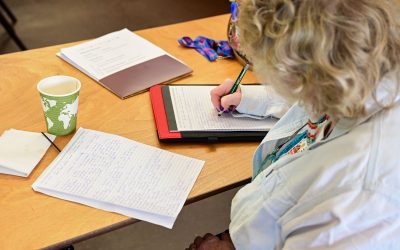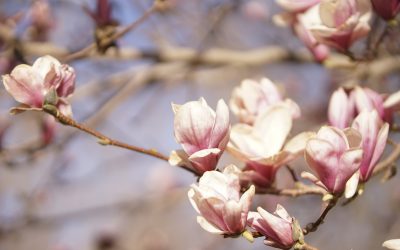NHBP Shares Insight With Tribal and Non-Tribal Governments to Aid in Better Cooperation, Understanding and Future-Planning
Planning for and creating security for the next Seven Generations takes research, strategy and discipline. It also takes collaboration in a lot of cases and hard work in every case. The NHBP Planning and Land Use Committee has been in operation since 2004. Before the casino, before the expanded government center, there were plans rooted in solid Bodéwadmi values, ethics and traditions.
In late October of 2021, NHBP Chief Planning Officer Dan Green, Tribal Member and PLUC Member Nat Spurr, and Tribal Member and PLUC Member Chris Rogers presented a webinar on Native American sovereignty, planning and land use. Hosted by the Michigan Chapter of the American Planning Association, NHBP’s presentation served as insight into the inner workings of Tribal government and ways we plan for the future to encourage better understanding from our neighbors and co-habitants in the region.
Following an introduction by Tribal Member Doug Taylor, the Traditional invocation by Tribal Member Andre Mandoka and Drumming provided by Charlie Pfeifer, Rogers spoke of the Tribe’s history and how the federal government’s treatment of Native Americans from the creation of the United States has impacted Tribal sovereignty and government structuring.
A notoriously complicated system, Rogers brought attention to the U.S.’s history of removal and forced assimilation, the boarding school era and finally, self-determination beginning in the early 1960s and on.
“We have our own Constitution, which acts just like the United States Constitution,” Rogers explained. “It’s our guiding document, the foundational structure of our government. We passed that and follow it using our own court system.”
While Native Americans on reservations still have to obey federal laws, Rogers continued, “we do absorb all of the rights and responsibilities outside of that, all of the governance of a state or a city, autonomously amongst ourselves. We pass our own laws, have our own legislative body and we also do our own planning.”
Values and Ethics of NHBP Planning
Next, Spurr shed light on Bodéwadmi values and ethics that inform planning and land use strategies – as well as daily life.
Collaborations between Peoples of the Great Lakes region extend far into NHBP’s past, Spurr explained, relaying a brief history of the Three Fires Confederacy between the Ojibwe, Odawa and Bodéwadmi.
“One thing that’s representative of not just the Potawatomi values, but the values of the People of the Three Fires is Mno-Bmadzewen; the ability to do things following a good path. And the Seven Grandfather Teachings are something we try to incorporate in everything we do.”
Spurr went on to explain the significance of the number seven in Potawatomi culture, offering two different interpretations of the next Seven Generations.
“We try to think Seven Generations into the future,” Spurr said. “The effects of the decisions and the things that we do today, how are they going to affect the generations to come? The other way of looking at it is that the Seven Generations can mean the three generations that preceded us, the current generation, and the three to follow.
“Everything we do has to be done with that kept in mind.”
When the Tribe established the PLUC in 2004, NHBP’s physical and financial landscapes were very different than what we know today.
“When it was created, our Tribal budget was less than 1% of what it is now,” Spurr said, “so it was extremely important for us if we were to make an investment in land acquisition or to acquire a new property, we had to go through the process and we had to think about everything… Still today, we use the same process.”
When a new piece of property becomes of interest to the Tribe, it goes through a thorough vetting process. First, it goes through an internal administration approval process, then NHBP’s Environmental Department conducts an investigative research report on the parcel of land to make sure that it “would be beneficial to the people, didn’t have pollution issues” or any other concerning issues, followed by a public comment open to all NHBP Tribal Members. After that, the PLUC makes a recommendation regarding the land to Tribal Council, who then decide how best to use the land going forward.
NHBP Approaches to Planning
Green explained NHBP’s approach to planning, sharing with the audience that NHBP owns approximately 1,000 acres of land, most of which is in Calhoun and Branch counties. Much of the management of that land deals with open spaces and natural resources.
“NHBP follows an integrated resource management plan,” Green explained, “which involves multiple departments, assessments, evaluations of lands and includes a Community input process.”
NHBP also uses a unique land classification system different than other municipal zoning systems, denoting land as culturally significant or sensitive land, among other categories.
Planning includes a multitude of technical and best practice tools to properly collect and analyze information in order to make sound decisions. Additionally, the use of geographic information systems (GIS) is an integral part of any land use planning process regardless of Tribal or non-Tribal Government, and NHBP is fortunate to have this GIS capacity to aid our Government.
NHBP gathers critical resource information about properties considered within the land use process and shares this information to the Tribal community during an input process. Balancing natural resources, open space, and other non-development activities with government facilities and infrastructure is a priority across the Government and one that is emphasized during each of the planning steps.
On the other end of the planning spectrum, PLUC also considers and manages capital improvement planning, which manages government facilities, roadways, fiber optics, access to natural resources and more.
“NHBP is not immune to the difficulties of rural infrastructure,” Green said. “We are fortunate to have fiber optic infrastructure that’s recently been expanded to Tribal households. That’s been beneficial to NHBP families, especially during this pandemic and during remote learning.”
NHBP maintains co-working relationships with area counties, townships and villages to ensure effective structural outcomes, like culvert and roadway improvements on the Pine Creek Indian Reservation.
Harmony Gmazel of the Michigan State University Extension Land Use Team hosted the virtual presentation and closed out by saying, “I think the best benefit of these webinars is really the connections that can be made between people… I appreciated hearing the history and policies that brought the Nottawaseppi Huron Band of Potawatomi to where it is today. I really appreciated that piece of it. And your planning for healthy, open spaces is so critical to resiliency and sustainability. Local collaboration really was key too.”
As 2021 comes to a close and 2022 expands before us, we are just one year shy of enacting a new five-year Strategic Plan. Looking back to share our planning processes with Michigan residents, leaders and planning and environmental agencies enables us to then look forward, think of our future generations and know that we continue to walk in a Good Way.




0 Comments